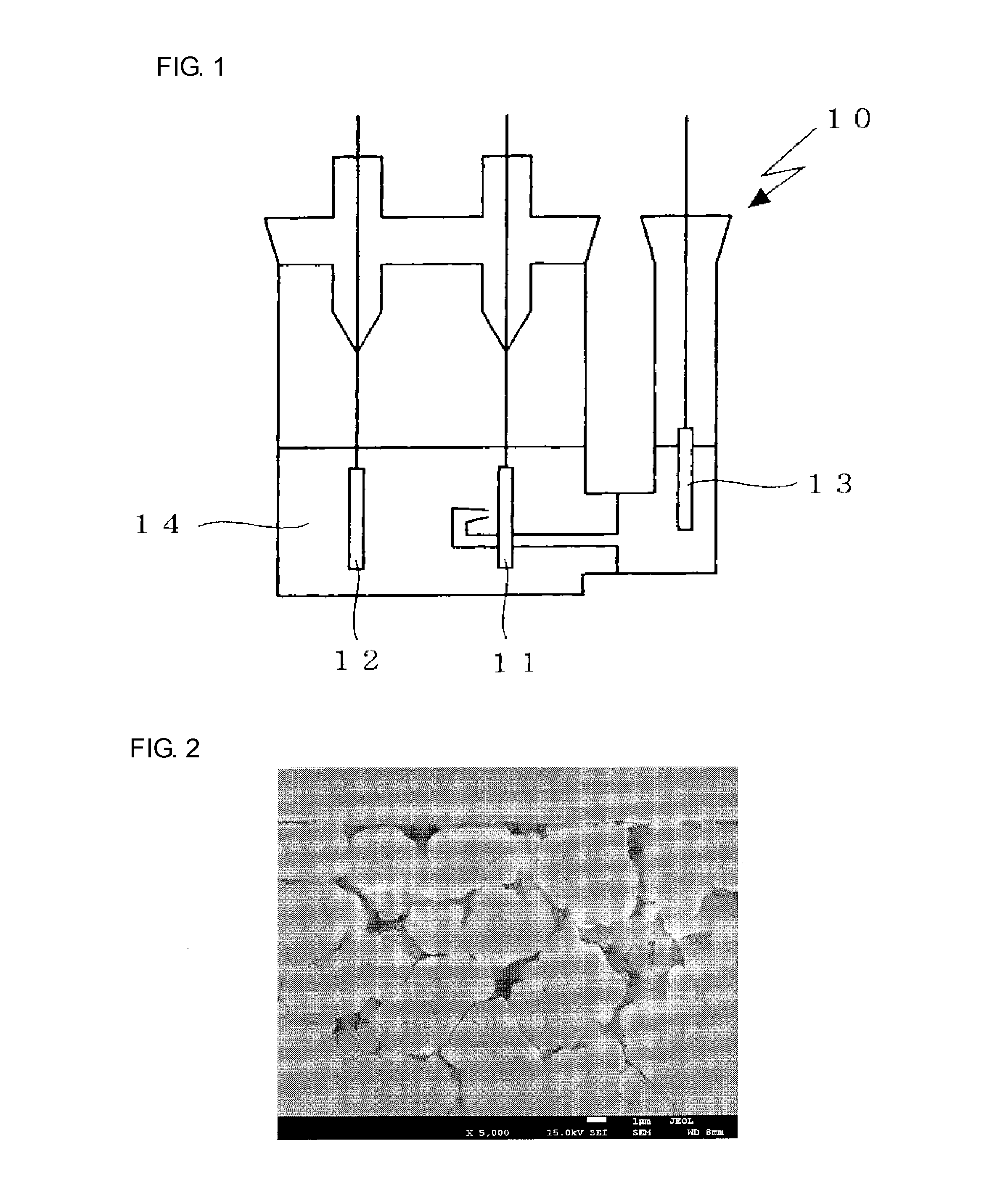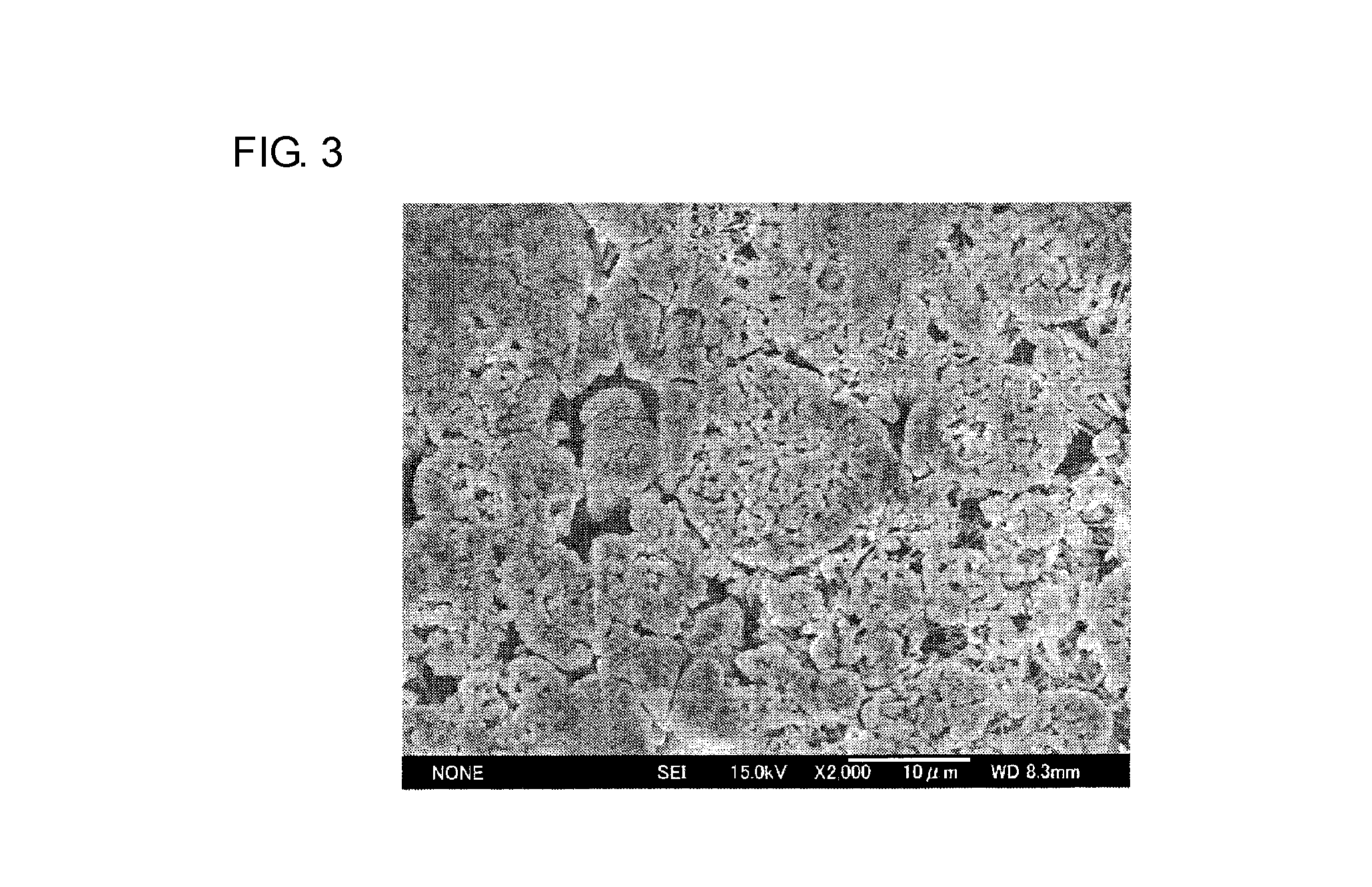Electrode for nonaqueous electrolyte secondary battery and nonaqueous electrolyte secondary battery
a technology of electrolyte secondary battery and electrolyte secondary battery, which is applied in the direction of batteries, cell components, electrochemical generators, etc., can solve the problems of poor electrolytic solution retention, degraded power output characteristic, and insufficient improvement of so as to improve the power output characteristic of nonaqueous electrolyte secondary battery and improve the power output characteristic. , the effect of improving the packing density of the activ
- Summary
- Abstract
- Description
- Claims
- Application Information
AI Technical Summary
Benefits of technology
Problems solved by technology
Method used
Image
Examples
example 1
Production of First Particulate Lithium-Containing Transition Metal Oxide
[0035]In this example, a first particulate lithium-containing transition metal oxide was produced by coprecipitation. Specifically, an aqueous solution was prepared which contained nickel ions, cobalt ions, and manganese ions prepared from nickel sulphate, cobalt sulphate, and manganese sulphate, respectively. Note that the aqueous solution was formulated so that the molar ratio among cobalt, nickel, and manganese in the aqueous solution (the cobalt to nickel to manganese ratio) was 40:20:40.
[0036]Thereafter, aqueous sodium hydroxide was added dropwise to the aqueous solution so that the resulting aqueous solution had a pH of 9 to 12, whereby a precipitate was produced. Then, the produced precipitate was filtered and rinsed in water. Next, the precipitate was subjected to heat treatment in a stream of oxygen-containing gas to obtain a nickel-cobalt-manganese composite oxide (Ni0.4Co0.2Mn0.4)3O4). Mixed with the...
example 2
[0044]A three-electrode test cell 10 was produced in the same manner as in Example 1, except that the mass ratio between the first and second particulate lithium-containing transition metal oxides (first particulate lithium-containing transition metal oxide to second particulate lithium-containing transition metal oxide ratio) was 50:50.
example 3
[0045]A three-electrode test cell 10 was produced in the same manner as in Example 1, except that the mass ratio between the first and second particulate lithium-containing transition metal oxides (first particulate lithium-containing transition metal oxide to second particulate lithium-containing transition metal oxide ratio) was 75:25.
PUM
| Property | Measurement | Unit |
|---|---|---|
| thickness | aaaaa | aaaaa |
| thickness | aaaaa | aaaaa |
| pH | aaaaa | aaaaa |
Abstract
Description
Claims
Application Information
 Login to View More
Login to View More - R&D
- Intellectual Property
- Life Sciences
- Materials
- Tech Scout
- Unparalleled Data Quality
- Higher Quality Content
- 60% Fewer Hallucinations
Browse by: Latest US Patents, China's latest patents, Technical Efficacy Thesaurus, Application Domain, Technology Topic, Popular Technical Reports.
© 2025 PatSnap. All rights reserved.Legal|Privacy policy|Modern Slavery Act Transparency Statement|Sitemap|About US| Contact US: help@patsnap.com



